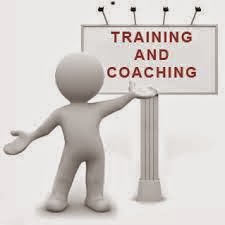Please Click Here to view the Basic Training Session with Dr. Ariel Policano, where she goes into detail regarding the Cross Analysis Function.
Please Click Here to view the Basic Training Session with Dr. Ariel Policano, where she goes into detail regarding the Cross Analysis Function.
The Universe that we live in is made of a vast sea of conscious energy that has infinite potential. Frequency plays an important role in the creation of the Universe because frequency allows energy to express itself into any form, including particles, atoms, planets, stars, galaxies and biological life. Did you know that Every biological or non-biological thing has a unique energy signature that vibrates at certain specific frequencies?
Understanding how frequency works is important for preventing and healing a wide range of diseases. When our frequencies are low, we are more vulnerable to disease. Bruce Tainio of Tainio Technology, an independent division of Eastern State University in Cheny, Washington, has done many tests proving that many diseases of the body develop when its frequency drops below certain frequency bands. His research on the power of frequency helped him discover that a healthy human body’s frequency is between 62 and 78 megahertz (MHz).
According to Dr. Royal R. Rife, every disease has a frequency. He found that certain frequencies can prevent the development of disease and that others would destroy disease. Substances with higher frequency will destroy diseases of a lower frequency. The study of frequencies raises an important question, concerning the frequencies of substances we eat, breathe and absorb. Many pollutants lower healthy frequency. Processed/canned food has a frequency of zero.
If we can keep the frequency of our bodies above 62 MHz, diseases and harmful microorganisms would have a very hard time surviving in our bodies. To prevent the frequency of our bodies from dropping to low levels, we need to avoid eating junk food, canned food and processed food as much as possible. We also need to meditate on a daily basis because meditation increases the frequency of our energies.
Immunity & Anti Aging
Tues: Feb 15th
5pm PST 8pm EST
5pm PST 8pm EST
Boosting the Immune System, Slowing Down Aging and Preventing Disease
The most common afflictions associated with normal aging are atherosclerosis, cancer and Alzheimer’s disease. Serious infections, cancers and inflammatory diseases are among the leading causes of premature death in older adults.
Doctors today respond to immune senescence by treating each disease or condition separately. This approach fails to correct a major underlying mechanism behind both disease and the aging process, and leaves us waiting for the next health problem to manifest. These disorders all arise from a common cause: the aging of the immune system. In people over the age of 65, the top causes of death include pneumonia, influenza, and sepsis (systemic inflammation caused by severe infection). Immune senescence is a major cause of all these maladies. It occurs when our aging immune system fails to protect against cancers/infection and instead generates excess inflammatory reactions that attack every cell in the body. What virtually no one understands is how aging accelerates immune decline and what must be done to reverse this lethal trend.
This has been an incredible year of scientific achievement. The Immune System and Anti-aging Categories developed for the Quantum Infinity Pro were designed to help extend the health spans of older people: by staving off the aging process while remaining relatively free of diseases. The primary intent of the Quantum Infinity Pro Immune and Anti-aging Categories are to produce an assessment protocol to determine areas of vulnerability and to specify a validated way to stave off diseases, aging, and death. Our goal is to gain insights into what causes people to die early - people who otherwise take exceptionally good care of themselves.
Join Dr. Char and Suzan for this FREE webinar preview by clicking on the following registration link: it's on Tuesday, February 17th, at 5:00 PM PST.
Click Here
 |
Biofeedback is one of the earliest behavioral medicine treatments and has been practiced in clinical settings since the 1970’s. Biofeedback achieves its results through psychophysiological (mind-body) self-regulation. In simplest terms, the ability to observe oneself and acquire the skills needed to make changes in one’s physiology, behavior, or even lifestyle in order to promote well-being and health. It is a tool for achieving mind-body integration. In biofeedback therapy, individuals are trained on electronic monitors to exert control over vital bodily processes, such as heart rate, respiration, blood pressure, muscular tension, and brain activity. By observing and monitoring shifts in bodily functions or striate muscle activity, patients learn to adapt and modify their mental and emotional responses to alleviate symptoms and help regulate specific health conditions. Biofeedback is widely used by physicians, nurses, psychologists, physical therapists, drug rehabilitation counselors, dentists and other professionals to treat many disorders.
In the 1950’s and 1960’s researchers from different fields independently studied various applications of feedback mechanisms to modify physiological functions in animals and humans. H.D. Kimmel, Neal Miller and David Shapiro were among the psychologists using operant conditioning models to further biofeedback research, and it was in the late 1960’s that the term biofeedback was first used to describe this type of learning. Early researchers thought that the instrumentation itself exerted direct psychophysiological effects and that the feedback information functioned as a kind of behavioral reward which led to symptom reduction. As a result, early outcome studies designed to show clinical effectiveness underemphasized the important role of training in biofeedback. Contemporary clinicians and researchers now view successful biofeedback treatment as contingent largely on skills acquisition and mastery, and the focus of research has shifted increasingly from demonstrating efficacy to refining and improving training procedures. In 1969, researchers joined together to form the Biofeedback Research Society (renamed the Association for Applied Psychophysiology and Biofeedback) to promote communication, study, and application of biofeedback in the U.S.











